
Meet the Woman Who Wants to Save Florida
The very same afternoon that billionaire Amazon CEO Jeff Bezos shot himself into space, Elizabeth Moore was down here on earth checking in on her 165 head of cattle at Triangle Ranch in Myakka. Moore is a wealthy woman. She doesn’t have Bezos money, but she could probably play around with rockets or invest in experimental technologies that are supposed to make you live forever. Instead, she’s decided to use her wealth to keep the planet healthy, and she’s emerged in a few short years to become one of Sarasota’s most significant philanthropic conservationists.
I met Moore earlier this year when a friend invited me to have a drink at Waterworks, a swanky private social club in an old brick building on 10th Street just north of downtown Sarasota. Moore was sitting in one of the lounge areas, chatting with some people. My friend, who works in the environmental field and is a big outdoorsperson, pointed her out and told me she’d purchased a place called Triangle Ranch—not to develop into subdivisions like so many other land-hungry developers in Sarasota have been doing with alarming frequency as of late—but to prevent that from happening.
Triangle Ranch is a 1,143-acre slice of natural Florida where three miles of the Myakka River coil through its wetlands and under hammocks of oak and palm. The land it sits on has immense environmental value. Not only does the ranch protect the quality of water and life around the Myakka River, but these undeveloped acres also maintain the integrity of an entire wetland system. The Florida peninsula is a big spigot that empties into the Everglades. Triangle Ranch is a small but vital part of that whole and the connecting piece between the Myakka River and Tatum Sawgrass marsh, the most vulnerable of the four depression marshes of the Myakka River valley. Its undeveloped acres keep the Myakka flowing the way nature intended, protecting water quality and land for humans and 120 species of wildlife, including threatened species like the crested cara cara, the gopher tortoise and the indigo snake.
At Waterworks, I introduced myself to Moore. She’s athletic (I found out later she’s an avid tennis player), with long blond hair and a quick smile. She wasn’t at all annoyed that I’d interrupted her conversation. In fact, she was friendly and eager to talk about Triangle Ranch. “Come and see it for yourself,” she said, and she invited me to one of her “Marsh Madness” events at the ranch that weekend.
The ranch is out there. From U.S. 41, I drove about 20 miles to the end of Fruitville Road and hung a right on Myakka Road and drove a few miles farther. Only an inconspicuous gate off Clay Gully Road showed me where to turn, since no sign proclaiming Triangle Ranch says that you’ve arrived. I passed a barn and went over a loud metal bridge with no guardrails that crossed the Myakka River. A long dirt road wound through pastures where cows behind barbed wire eyed me suspiciously.
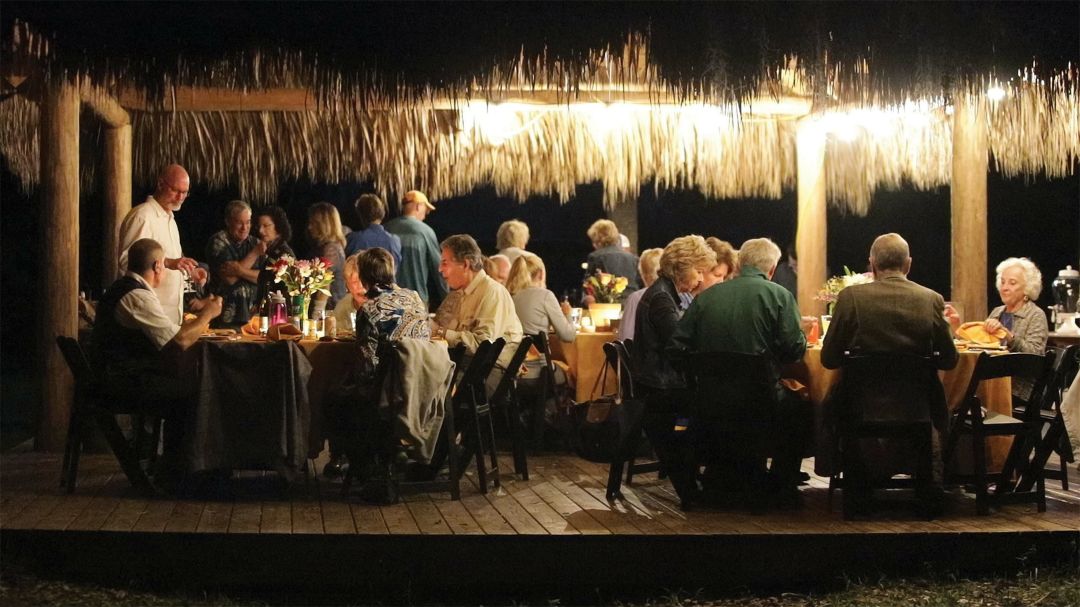
Environmental leaders gather under a chickee hut for Moore's Marsh Madness event.
Image: Gareth Rocklife
Eventually I saw an old home and a group of 20 people gathered around a chickee hut, where an extravagant buffet of oysters and mullet—all sustainable—was spread out. The guests were longtime local environmentalists: former New College instructor, author and activist Jono Miller; John Lambie of The Florida House; and David Tomasko, the executive director of the Sarasota Bay Estuary Program. These people rarely meet up as a group, and that was the point. “Marsh Madness” is an event meant to bring them together, sort of like a river camp think tank.
As we downed oysters, Moore stood up. “Thank you all for coming,” she began. “We all know water is life, and all the water that feeds into the coast starts right here.” She talked about the importance of protecting upland water quality and how everything we do out east impacts the health of the Gulf coast. She then, without notes, named every single person, first and last name, and the ways in which each individual standing in her back yard was working to save Sarasota’s nature.
What Moore is doing is unique—and even more impressive when you consider she’s only been at it for the past seven years. For all of Sarasota’s significant philanthropy—and it is significant—only a handful of individuals, people like the late Mary and Allen Jelks, who have a local preserve named in their honor, have focused on preserving Sarasota’s natural systems. Donors give to important environmental causes, but they aren’t purchasing large plots of land for watershed protection—especially land that they will personally manage as a nonprofit conservation area and as a for-profit working ranch. That’s why Jon Thaxton calls Moore a unicorn.
“None of us knew what to think when we first met Elizabeth,” says the former Sarasota County commissioner, now senior vice president for community investment at Gulf Coast Community Foundation. “She comes out of nowhere, didn’t know much about this natural environment, the cultural history or watershed preservation. This might get me in trouble for saying it, but in terms of outright philanthropy, we have very few people who have the capacity or interest to invest large donor contributions to environmental efforts. That’s why I call her a unicorn.”
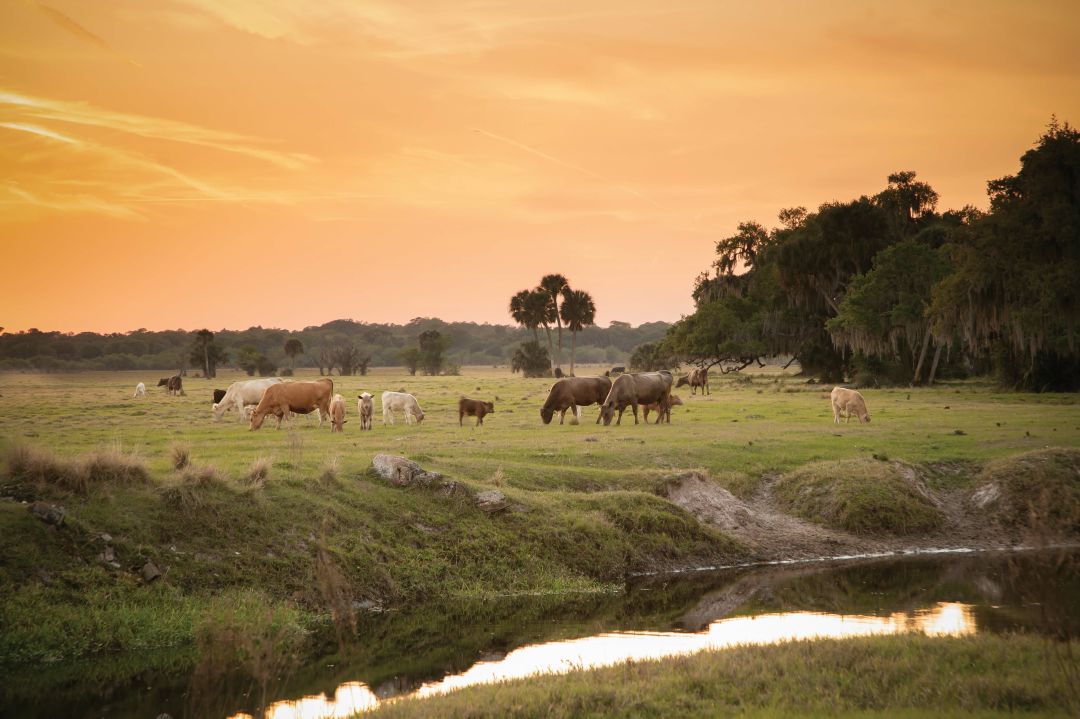
Part of the land is a working cattle ranch.
Image: Everett Dennison
Moore didn’t move to Sarasota to save it. Born in Syracuse, New York, and raised on the North Shore of Massachusetts, Moore went to a liberal arts school in Ohio and then earned a master’s degree in international affairs from American University. She first visited Sarasota in the late 1960s because her grandparents had a house on Longboat Key, but it wasn’t until 2007 that she and her now ex-husband, Stuart Moore, packed up their five kids and headed south.
Her husband, one of the co-founders of Sapient Corp, an Internet services consultancy, had retired just a year earlier. He had been enormously successful. A Forbes article estimated his net worth in 2000 at “well past $1 billion.” Stuart might not have remained on the billionaire list in the years after that, but when Sapient was sold in 2014, he, as a shareholder, made $259 million, according to another Forbes article.
“We decided that we would just spend a year in Florida,” Moore says about that time. “The kids were already familiar with IMG Academy, and they’d attended Saint Stephens [Episcopal School]. But in just a couple of months, we decided to look for a house for a more permanent move, we loved it so much.”
By 2014, Moore found herself divorced. She had another passion, though—the environment.
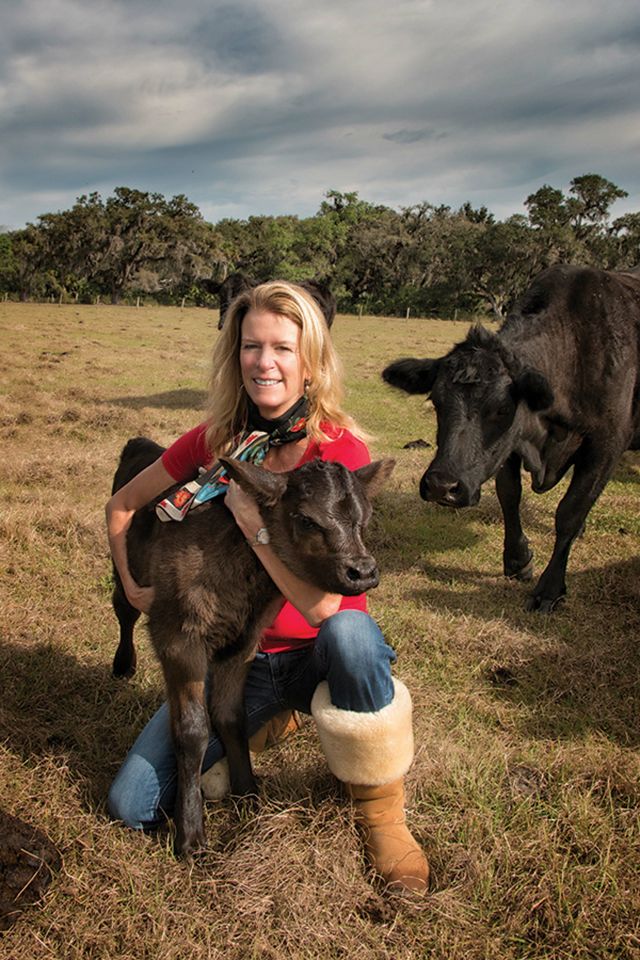
Moore with one of her calves
Image: Everett Dennison
She inherited her interest in conservation from her family. “My family were supporters of the National Audubon Society, and I remember hearing them curse politicians who had anti-environmental policies,” she says. Moore describes an idyllic childhood growing up outside. “The woods were such a magical place when I was a kid. Running in and out of the willow trees, birds and butterflies, picking blueberries and blowing dandelions. I used to lie down on the grass and just listen to the songbirds.”
Moore and her ex-husband had been deeply involved in philanthropy in Massachusetts, giving to the Boys & Girls Clubs of Boston, the arts, museums and education. But perhaps more than anything, Moore was influenced by the culture of conservation philanthropy from Massachusetts. “There’s a whole history of saving land in Massachusetts,” she says. “From The Trust for Public Land to green belts to the Manchester Essex Conservation Trust.” In 2004, the Moores and two other families bought rugged, uninhabited House Island off the coast of Massachusetts’ North Shore and donated it to Audubon.
Now a resident of Sarasota, Moore has transferred much of her attention to Florida’s environment. In the past seven years, she’s donated millions to local nonprofits and sits on multiple local boards.
Meg Lowman, the co-founder and executive director of the TREE Foundation, a nonprofit that focuses on tree research and education, where Moore is currently president, says that working with Moore is unlike most experiences she’s had with philanthropists.
“She’s not an armchair conservationist,” Lowman says. “She doesn’t just send money to a government or organization; she wants to get her boots muddy and be involved with innovative and creative solutions.” Lowman also spoke of Moore’s capacity for listening. “She absorbs information from experts. I’m a scientist, and she would always listen and ask questions. In my experience, she’s a breath of fresh air.”
But Moore’s purchase of Triangle Ranch might be her most significant work yet—both to her and Sarasota.
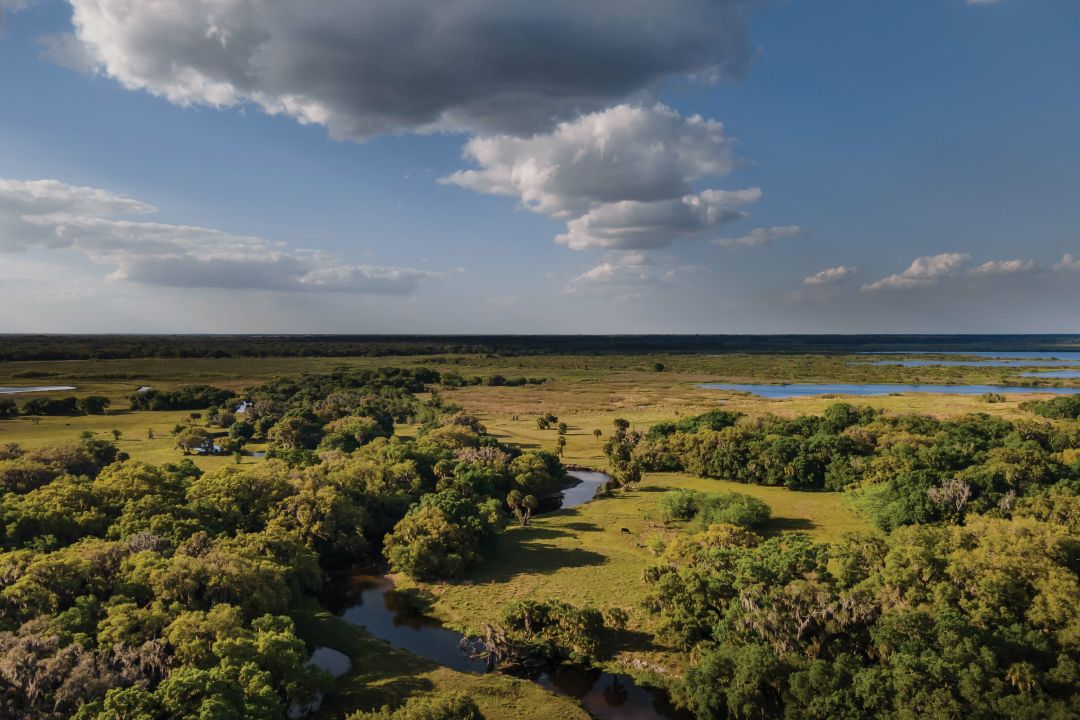
Triangle Ranch protects the quality and flow of water around the Myakka River.
Triangle Ranch had been owned by Tony and Lela Carlton, who were finally ready to retire after decades of farming and ranching. Tony was part of the Carlton clan, a ranching family in Sarasota for more than 100 years. The couple had the ranch on the market for three years, and developers were circling. But Tony and Lela cherished the country life and didn’t want to see the place get chopped up like so many other ranches in the middle of Florida. “I hate to see this country turn into subdivisions,” Tony Carlton told the Bradenton Herald back in 2016.
The Conservation Foundation of the Gulf Coast, a nonprofit that works to protect local land and water, often by buying key parcels, knew just how vital the ranch was to the ecological system. The foundation had been working with the Carltons since 2013 to negotiate a purchase price and put together funders.
“The Carltons gave us the gift of time,” says Christine Johnson, president of the foundation. The foundation was also talking to private donors and the Southwest Florida Water Management District (SWFWMD) about buying the land for conservation. But they hadn’t been able to reach the $5.5 million figure the Carltons wanted. Then Mickey Davis, a board member of the Conservation Foundation, brought Elizabeth Moore to the table in 2014. Moore looked around and saw how complicated any transaction would be if individual donors, a foundation and a state agency needed to find money and agree on how best to purchase the land.
“Before I went out to the ranch in 2014, I didn’t even know where Myakka was,” says Moore. “I mostly just went up and down U.S. 41. But when I first saw it, it was just so beautiful. I knew I had to keep it the way it was. So I wrote a check for $3 million.”
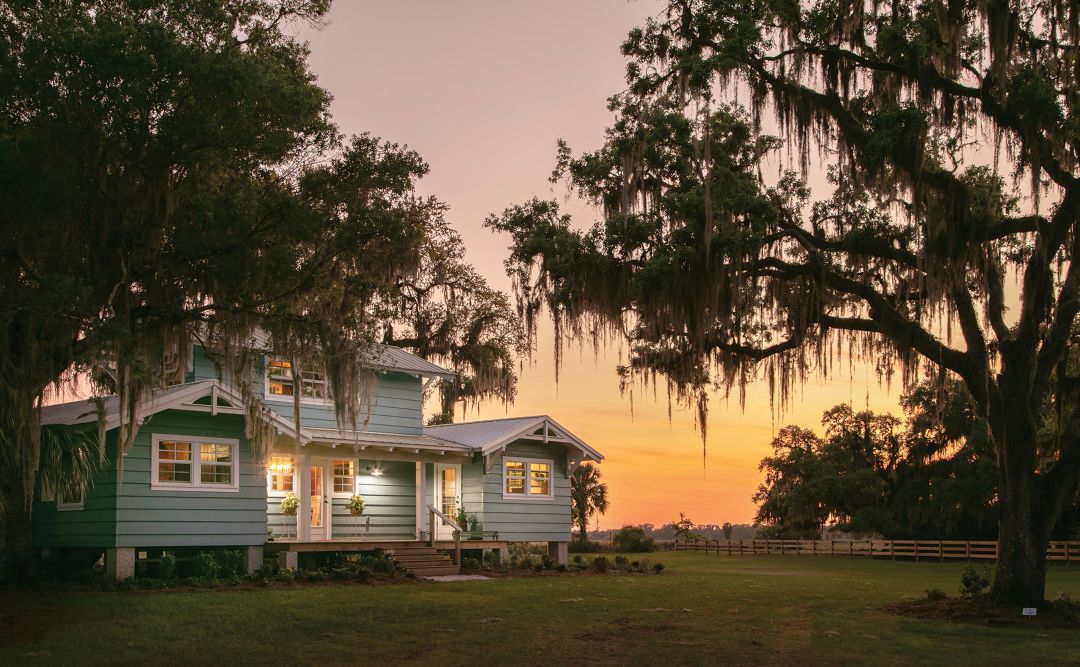
The restored Cracker cottage
SWFWMD agreed to pay $2 million out of the Florida Forever fund, and the foundation raised the remaining $550,000 from The William G. and Marie Selby Foundation, and The Morton and Spapperi Family Foundation. The deal was finalized in 2016, and Moore became the new owner of Triangle Ranch.
The purchase requires that 1,105 acres out of the 1,143 total acres remain a conservation easement. Legally, no future owner of the land may negatively affect the conservation requirements written into the easement. No mining of resources, no selling of trees, no digging of dikes or building of structures. The easement allows that Moore can responsibly utilize the property with either cattle ranching, agri-business and eco-tourism on 37 acres. She was also allowed to put residential buildings on those acres. That’s where Moore built her “Cracker village.”
Moore became captivated by Florida Cracker culture after reading A Land Remembered by Patrick D. Smith. “The book inspired me,” she says. “I had a vision in my head: a whole Florida Cracker culture architecture that recreates a little Florida Cracker experience.”
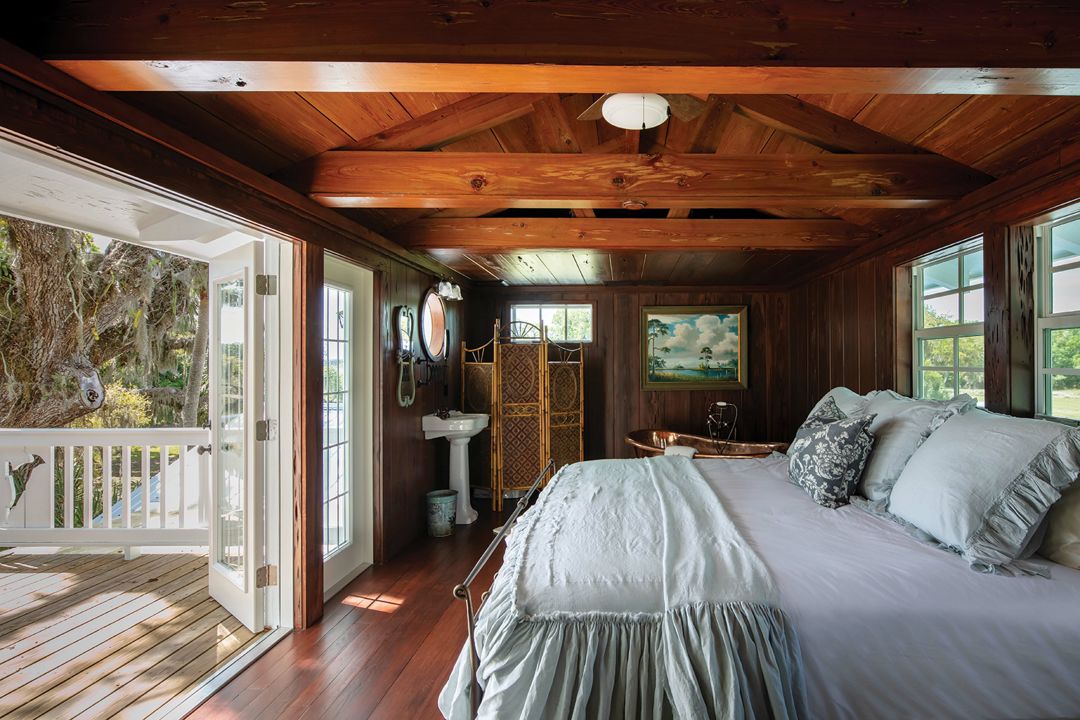
The second-floor bedroom overlooks the Myakka River.
Her Cracker village consists of two new cabins and a two-bedroom 1936 Cracker home of pecky cypress that used to sit on Siesta Key, where it was set to be demolished and replaced by a waterfront mansion. Moore bought the house (called Little Siesta), hired a specialized moving company to cut it into three pieces, got permission from three different local governments, hired a police escort and moved it to Triangle Ranch in the dead of night.
She restored the pecky cypress exterior and interior using Josh Wynne Construction and kept the footprint of the home the same. “I love my bedroom most,” she says. The master bedroom takes up the whole of the second story, with windows on all sides. Outside the bedroom is a second porch that overlooks the Myakka River and the birds and wildlife that visit the land. Moore has a penthouse condo in downtown Sarasota, but she spends many of her nights out on the ranch in that house when she’s in Florida.
Moore hired Jerry Sparkman of Sweet Sparkman Architecture and Interiors and Josh Wynne Construction to build two 12-by-12-foot cottages on the property. The cottages are decorated in period style--complete with antique chamber pots at the foot of the beds. Fortunately, she’s also built bathrooms equipped with fancy Toto toilets that have bidets, seat warmers and deodorizers. Moore rents out the main house and cabins for weddings and group events through Airbnb. Guests can enjoy ranch-raised beef, local vegetables, wine, electric bikes, kayaks and more.
Jason McKendree, Triangle’s land manager and rancher, lives in a farmhouse at the ranch with his wife Lee Ann and two sons. McKendree once managed more than 30,000 acres of land at Schroeder-Manatee Ranch (SMR), the parent company of Lakewood Ranch. “I went from being a corporate cowboy to a kayak cowboy,” he says. Instead of wearing cowboy boots and jeans, he had on crocs and roomy shorts. “You want to wear something you can get wet,” he says.
McKendree drives through the property every day, checking up on the cows and making sure they’re doing fine. Two calves were missing a front leg from a troublesome alligator.
“We’re gonna get him,” he says. Noisy sandhill cranes are everywhere.
Managing the water and protecting the health of the river is the other part of his job. The ranch is a bathtub, he explains: “It gets so wet so fast—80 percent of all you see will be covered with water in the rainy season. But then the water disappears like you pulled a plug out of the tub.”
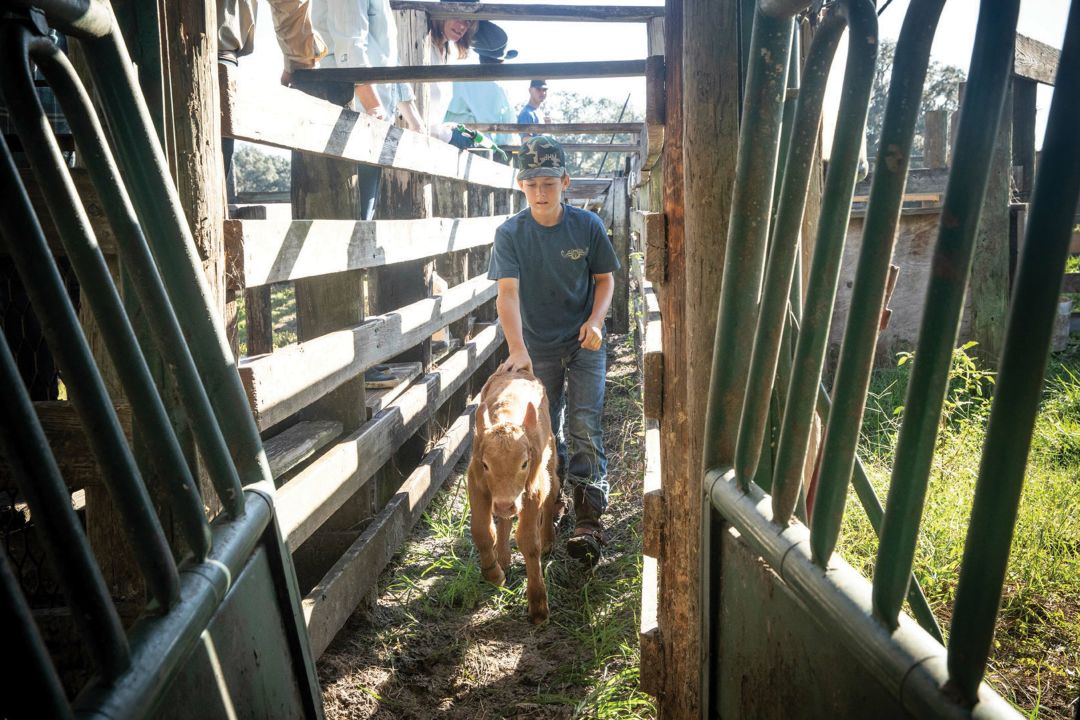
Jason McKendree herds a calf
Image: Gareth Rocklife
The ranch breaks even after selling cattle and gator tags, and Moore watches over everything, making sure nothing is wasted. “She’ll see an old two-foot board and ask me to find a way to reuse it,” McKendree says. “She’s no BS. She understands.”
Moore is direct—in a nice way. “My nature is to be very activist, social,” she says. “I don’t want to be used just for my money. I don’t want to micromanage by any means, either. [It’s] this balance between giving and somewhat controlling it. Give it and guide it. I want my money to be well stewarded by others. I’m not a scientist. I’m not a builder. But I want to guide it. If I’m going to give them money, they better spend it well.”
Moore is part of a rare breed of philanthropists interested in conservation, acknowledges Johnson of the Conservation Foundation.
“We need more Elizabeth Moores,” Thaxton says. “We are the last generation of human beings in Sarasota to have a conscious decision of whether we preserve a natural landscape or we destroy it. People like Elizabeth have demonstrated that it is possible to save these places and demonstrate commercial viability, food production alongside clean water and air and protecting endangered species habitat.”
Moore is still learning the ropes out at Triangle—she kayaks among the alligators and is riding a horse on a cattle drive across the state soon—and she hopes to find more people like her as board members to preserve natural Florida. “It’s a race against time,” she says. “There’s a lot of joy out of saving land. Just knowing that the land is going to be saved in perpetuity for wildlife—and humans. We share this earth with so many other creatures, it’s critical to our own survival to ensure we save these places.”
I thought about billionaires Bezos, Richard Branson and Elon Musk, who are living out childhood fantasies of star trekking, believing that they are saving humanity by leaving us behind. Elizabeth Moore is staying down here with the rest of us.
“I never thought I’d own a cow,” she laughs.